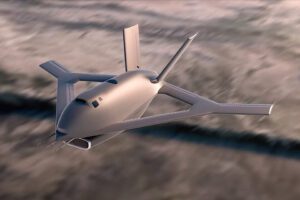Have you ever wondered what the future of flight holds? Look no further than the Aurora X-65, a prototype aircraft that’s challenging traditional design with its unique approach to aerodynamics. This aircraft, developed by Aurora Flight Sciences under DARPA‘s CRANE program, boasts incredible potential for improved performance and efficiency.
Unlike conventional airplanes that rely on flaps and rudders for maneuverability, the X-65 utilizes a revolutionary technology called active flow control. This system ditches the traditional control surfaces altogether, opting for a smoother design with strategically placed holes on its wings. These 14 strategically placed “effectors” employ pressurized air to control the aircraft’s pitch, roll, and yaw. This innovative approach offers a multitude of benefits:
- Simplified Design: By eliminating complex moving parts, the X-65 boasts a lighter and potentially more reliable airframe. This reduction in complexity also translates to lower maintenance requirements.
- Enhanced Performance: Active flow control allows for more precise maneuvering, potentially leading to improved overall flight performance.
- Modular Construction: The X-65‘s design allows engineers to easily swap out the outboard wings and effectors. This modularity facilitates rapid testing of various configurations without the need for building multiple aircraft from scratch.
The Aurora X-65 is currently under construction, with its first unmanned test flights scheduled for summer 2025. This initial test phase will see the 7,000-pound aircraft soar through the skies at speeds reaching Mach 0.7.
The success of the X-65 prototype could pave the way for a new generation of aircraft with transformative capabilities. With its sleek design, innovative technology, and modular construction, the Aurora X-65 is a glimpse into the exciting future of aviation. Visit the Aurora website for more details.




